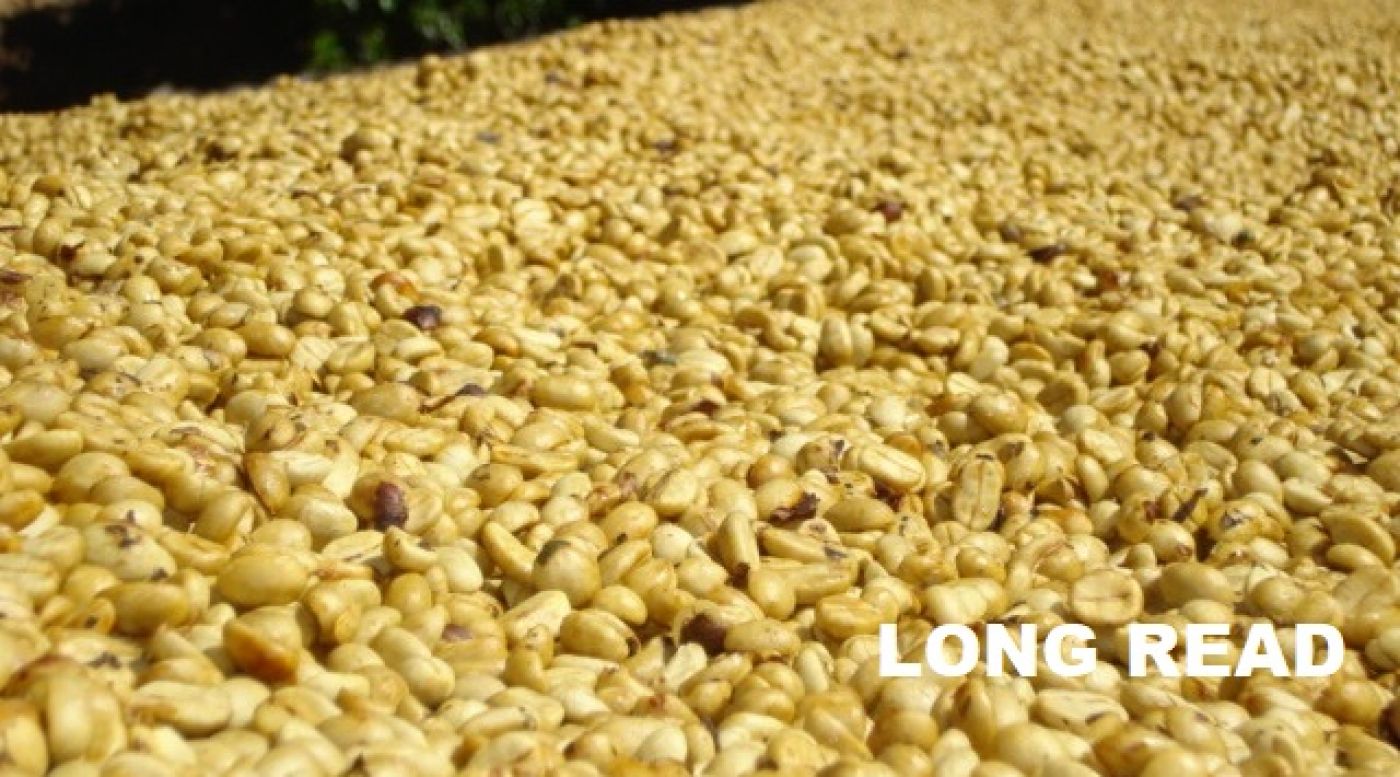
About experiments at origin. Introduction
Surely, you have heard about coffee processing experiments and probably have tried experimental cups. Why is this coffee so different? We have prepared a series of articles dedicated to coffee fermentation and to experiments at origin. Part one. What is a Fermentation Experiment.
What exactly is a fermentation?
It is the chemical breakdown of starches and sugars of the coffee berry into simpler molecular compounds, including ethanol, carbon dioxide and water. Such splitting could be the result of:
- Bacteria activity;
- Activation of the berry's own enzymes, triggered by certain external conditions.
As a rule, coffee processing involves the fermentation of the berry pulp and skin, not of the grain itself. The grain only absorbs sugars and acids from the fermented mass. However, history knows examples when the grains themselves, being highly fermented, gave an incredibly tasty cup. For example, The Best of Panama's 100% fermented coffee beans were sold at a price of 400 USD / kg in July 2017. But that was an exception. Fermented grains are usually related to defects: they can taste bitter and have a negative acidity, for example, pronounced acetic acid.
What do we need for fermentation?
- Organic product contained in berries: starch, sugars and acids. The fermented product primarily depends on the properties of the source material. It involves genetics, terroir, berry ripeness, etc.
- Type and quantity of bacteria. Usually farmers work with bacteria which already exist in the natural environment. To create experimental coffee, some of them add additional microorganisms. Note that fully controlled fermentation can only occur in a laboratory. On a farm, it is possible to calculate the approximate result based on the properties of the dominant bacteria, however this calculation, as well as the attempt to reproduce the experiment, will never be accurate.
- Environmental conditions. Environmental conditions influence the chemical processes and the speed of the bacteria growth. The main conditions include:
- Temperature. The higher the temperature, the more active the microorganisms work; however, it is true up to certain limits as some bacteria die out at temperatures above 40º C.
- Moisture contributes to more rapid reproduction of microorganisms.
- Illumination affects the viability of some bacteria (for example, fermentation in black plastic will give a different result than fermentation of the same coffee in a transparent or translucent plastic)
- pH. Different microorganisms give different reactions to acidity. When planning experiments, it is very important to take into account the pH of water available on the farm.
- The concentration of oxygen and carbon dioxide in fermentation tanks has a direct effect on the chemical interaction of molecules due to oxidation and due to the speed of reproduction of aerobic bacteria.
All components are continuously changing during the fermentation process: source material, the number of bacteria, as well as external conditions. For example, at some stage bacteria begin to die without sustaining the acidic environment, at some stage oxygen ends and the anaerobic process begins etc.
How do berries ferment in classic coffee processing schemes?
Fermentation accompanies almost all existing coffee processing schemes. Let's take a closer look at each.
Natural Coffee.
It is the oldest type when the berries are dried whole, with skin and after that they are cleaned. This type of treatment is typical for a dry climate (for example, in the plains of Brazil), as well as for poor regions with a shortage of fresh water. In addition, unripe berries, which are difficult to depulp, are often sent for natural processing.
With natural processing, each berry is fermented separately, under the protection of skins while the grains absorb the berries sugars. Since the crop dries before the fermentation of the skin itself begins, each berry has its own separate history of fermentation and the heterogeneous taste of natural coffee is associated with this.
Washed Coffee.
The berries are depulped (by removing cascara and part of the pulp) and then sent to a tanker, where the bacteria eat up the remaining pulp within 12-24 hours. During these hours fermentation intensity depends on temperature, humidity, type and number of bacteria and other factors. Since the skin is removed and the coffee is fermented in a homogeneous mass, its taste is more uniform.
Semi Washed Coffee.
This is the only method of processing that does not imply fermentation. Coffee is depulped and immediately after the rest of pulp is removed in a special machine. Semi Washed Process reveals the genetics and terroir of the product in its purest form. For example, when conducting experiments with fermentation, Mare Terra Coffee process some of the berries as Semi Washed. The resulting coffee, “Patron”, when compared with experimental lots, allows the customers to fully feel the effect of fermentation on the taste.
Honey.
The berries are depulped and sent to air dry. Fermentation occurs during drying, but unlike natural processing, the taste of the Honey is more uniform, since the skin is removed and the grains dry in a more homogeneous mass in which bacteria interact with each other. The intensity of taste depends on the amount of pulp remaining, the drying time and other factors, but as a rule it is slightly lower than with Natural Coffee.
Keep in mind that in some countries there is a confusion with the names of processes. For example, in Africa, there is no semi-washed processing, producers call this honey processed coffee. In Colombia, on the contrary, the term semi-washed processing is not used, although in fact it exists and is called “washed coffee with post-processing”.
So, what is a fermentation experiment?
All the classic processing methods described above require control of the physical process: the farmer controls when the coffee is dry, when the pulp is removed, and so on.
Experiments begin with an attempt to control chemical processes during fermentation. Here it is necessary to calculate under which chemical reactions the berry will give interesting enzymes enriching the taste, under what conditions the grain will have time to absorb only positive notes from the fermented pulp, and ... create these conditions.

